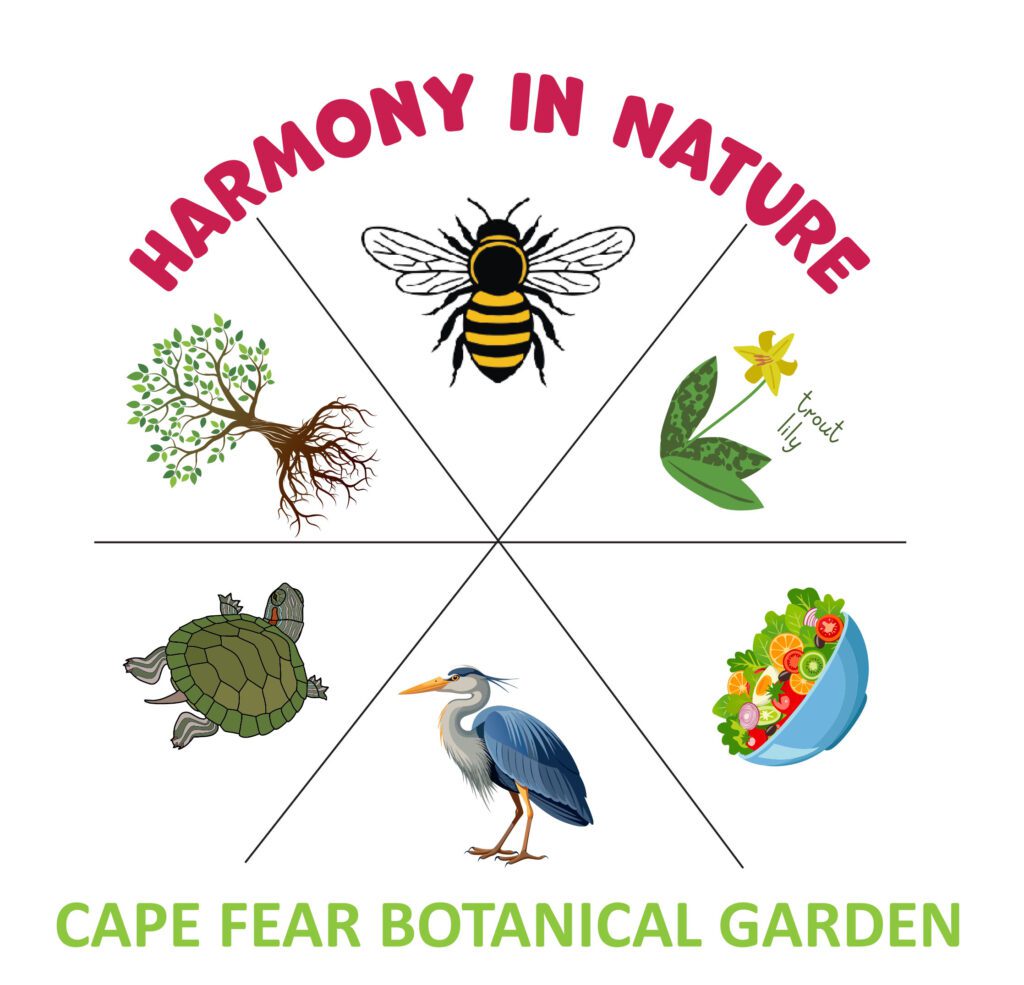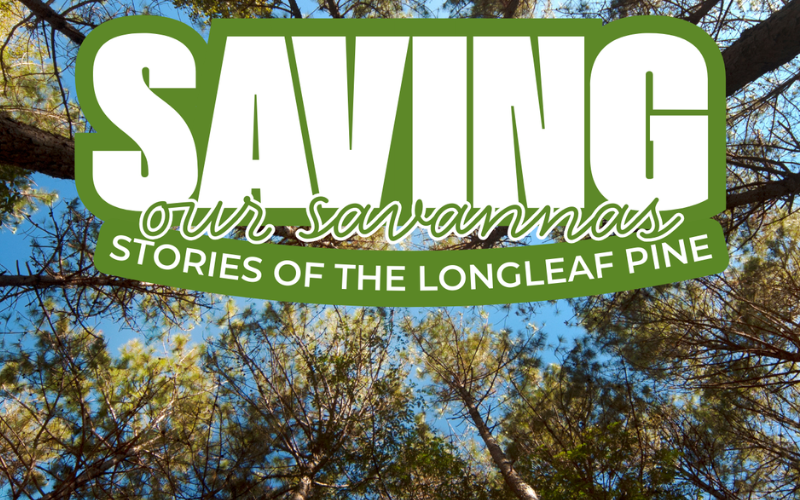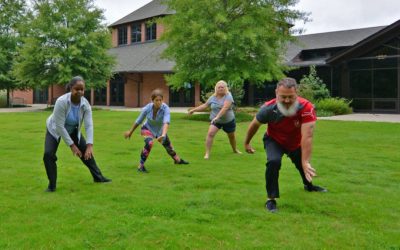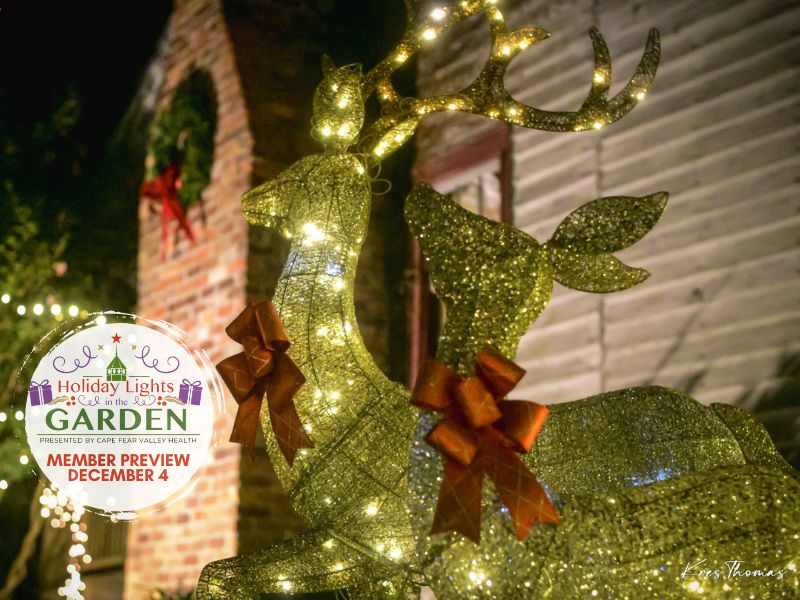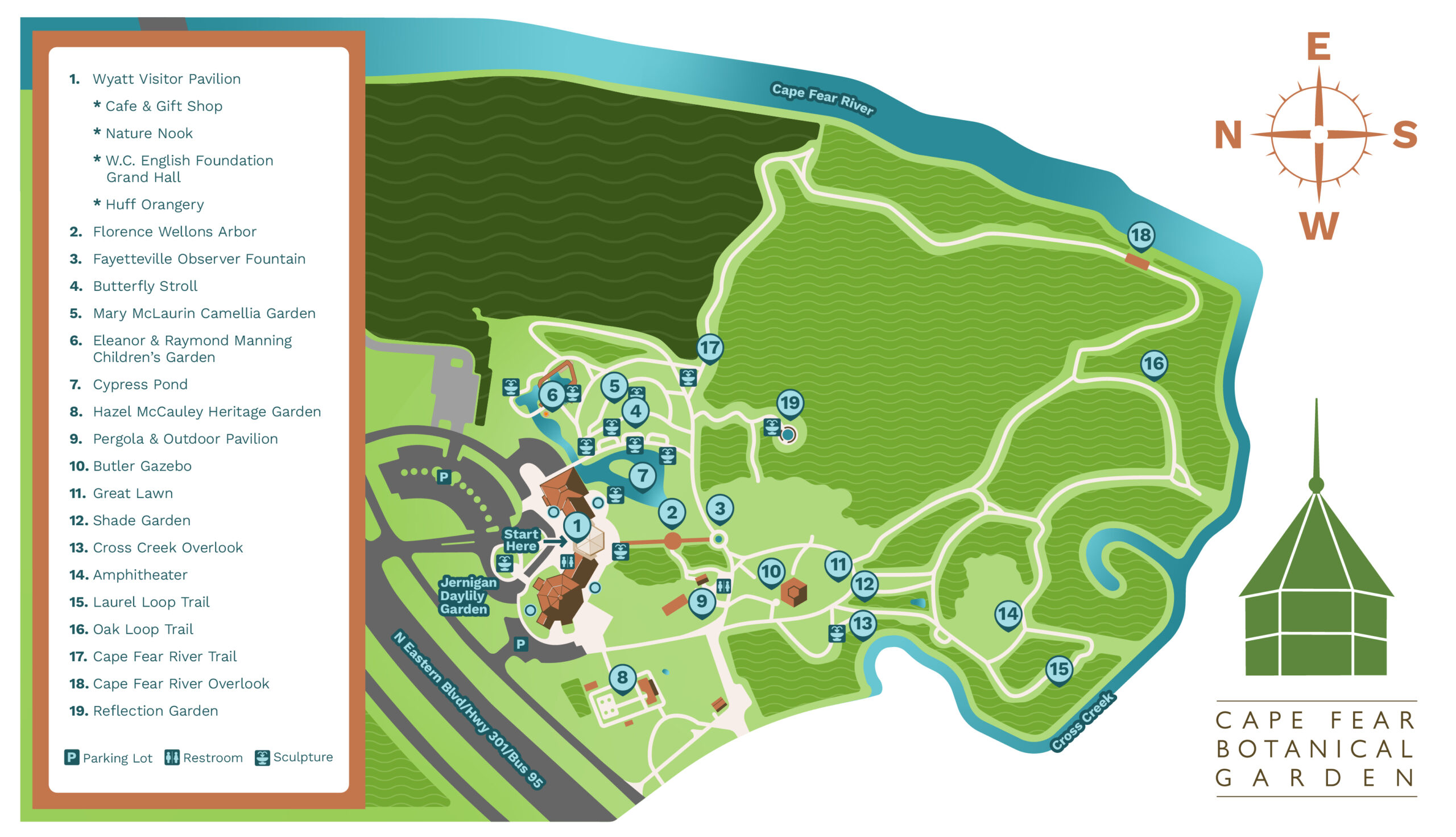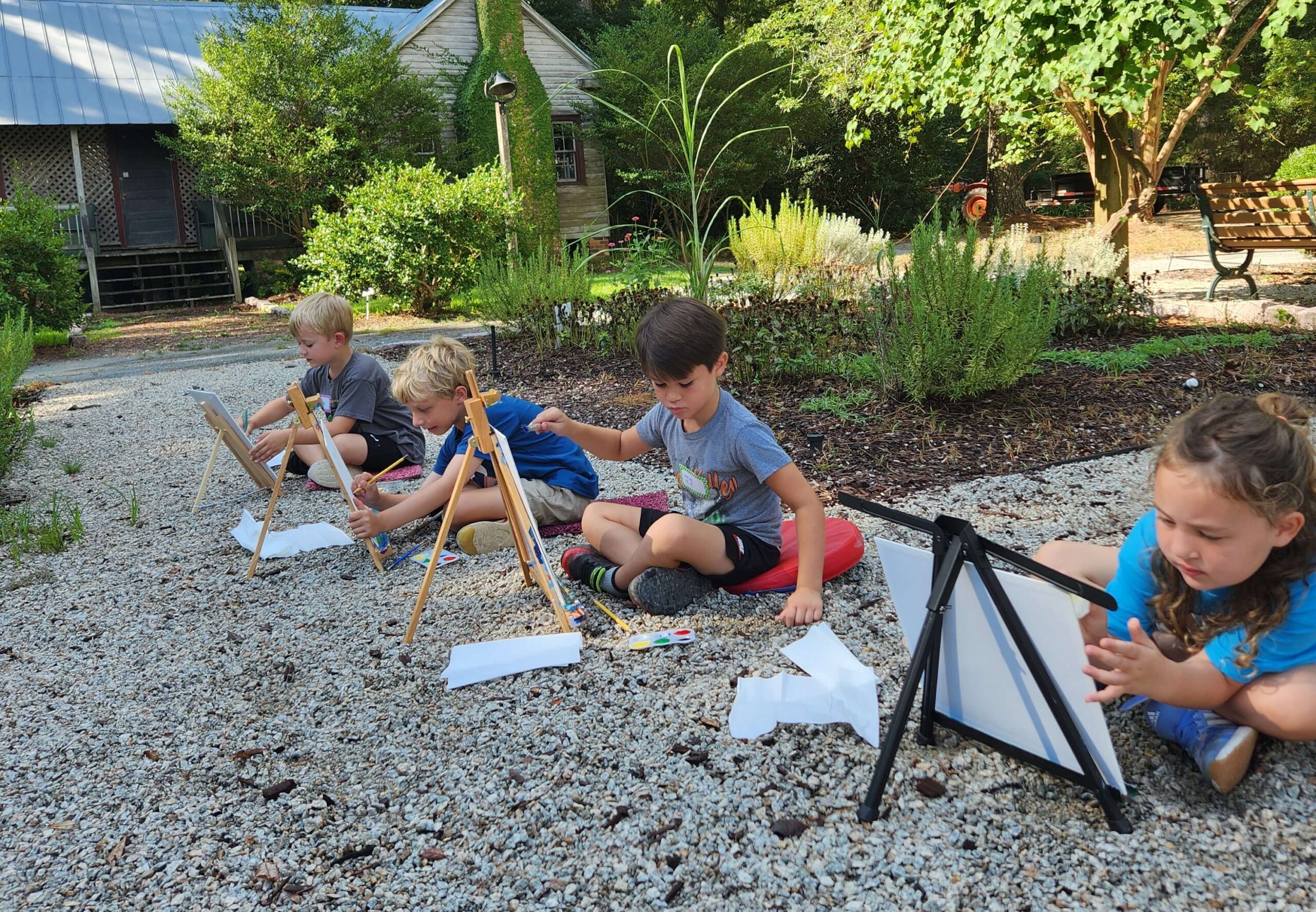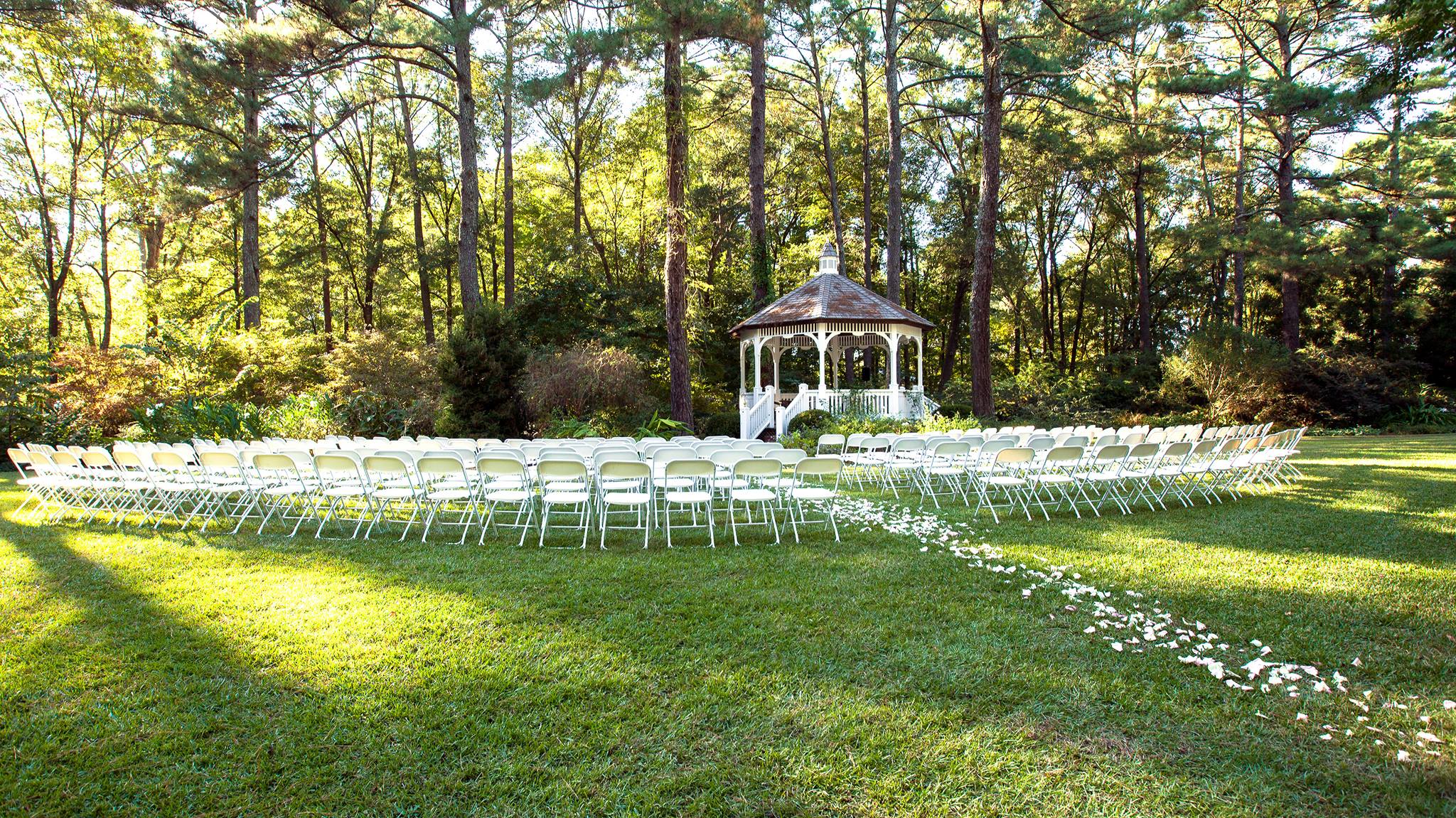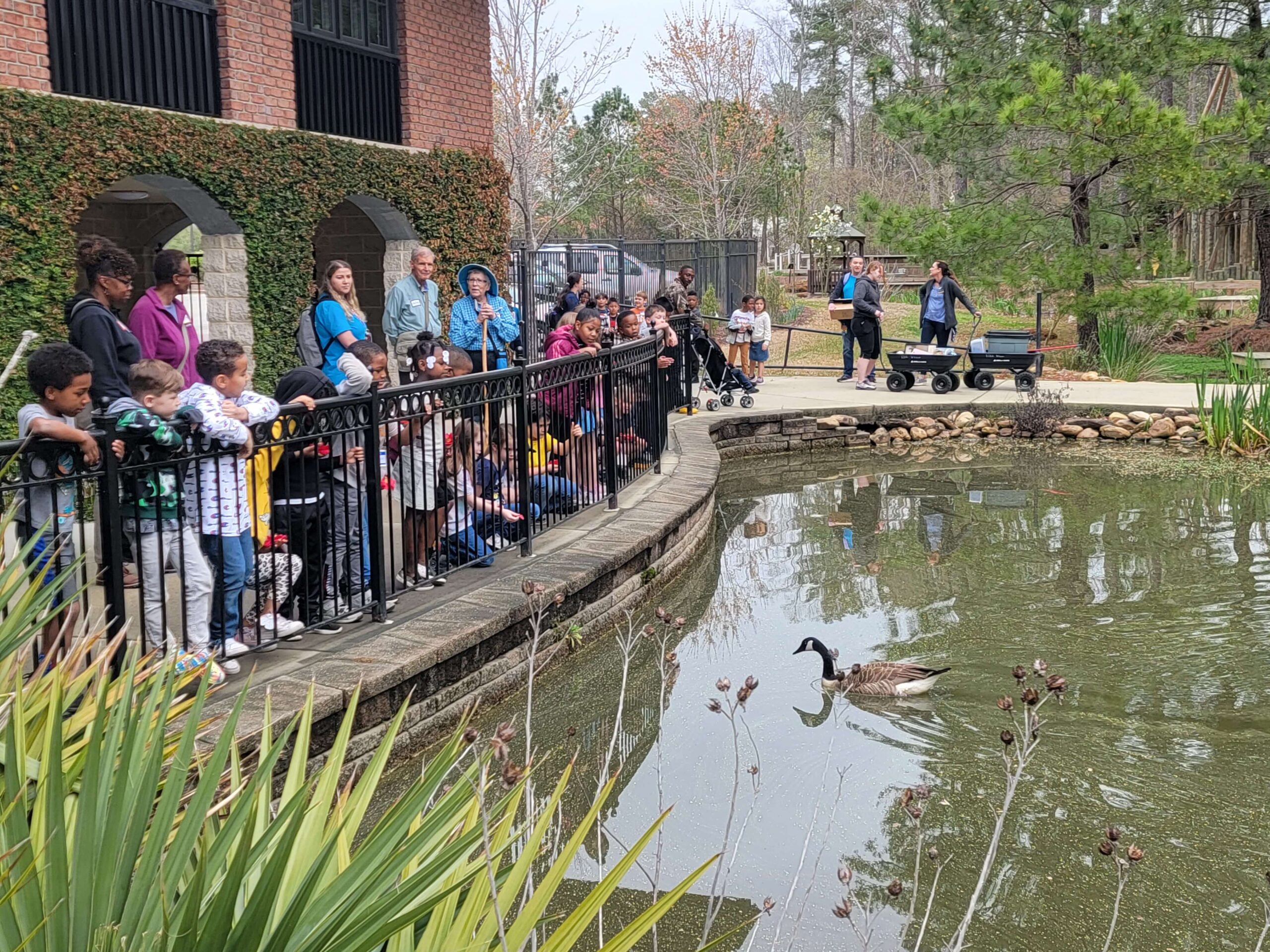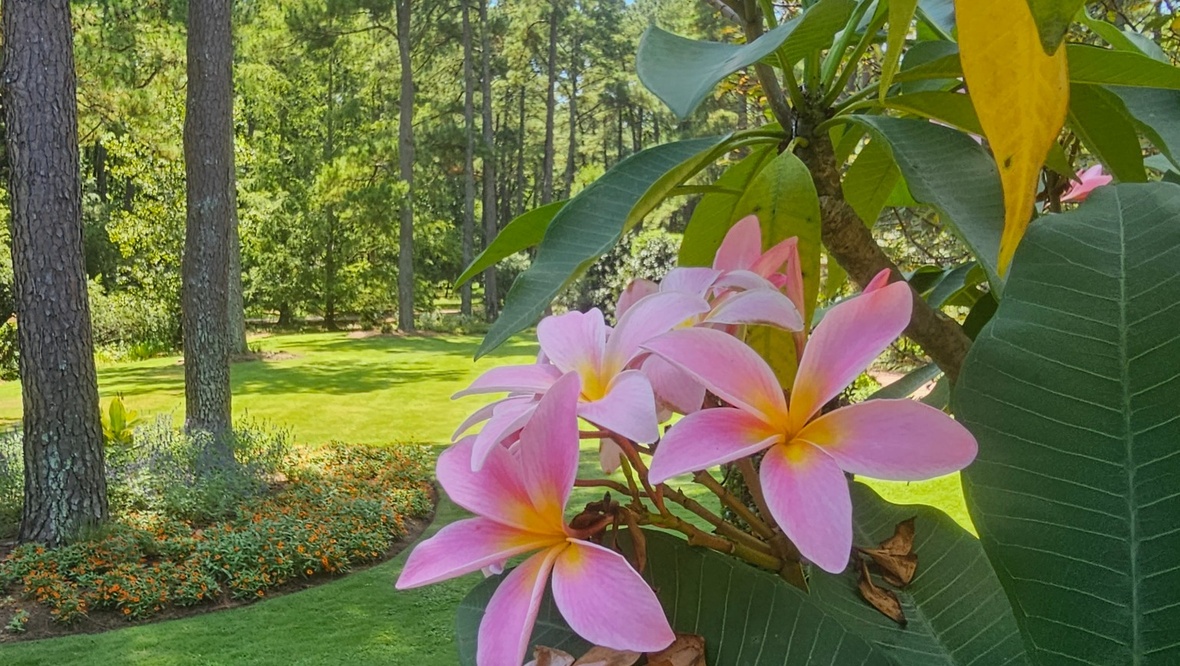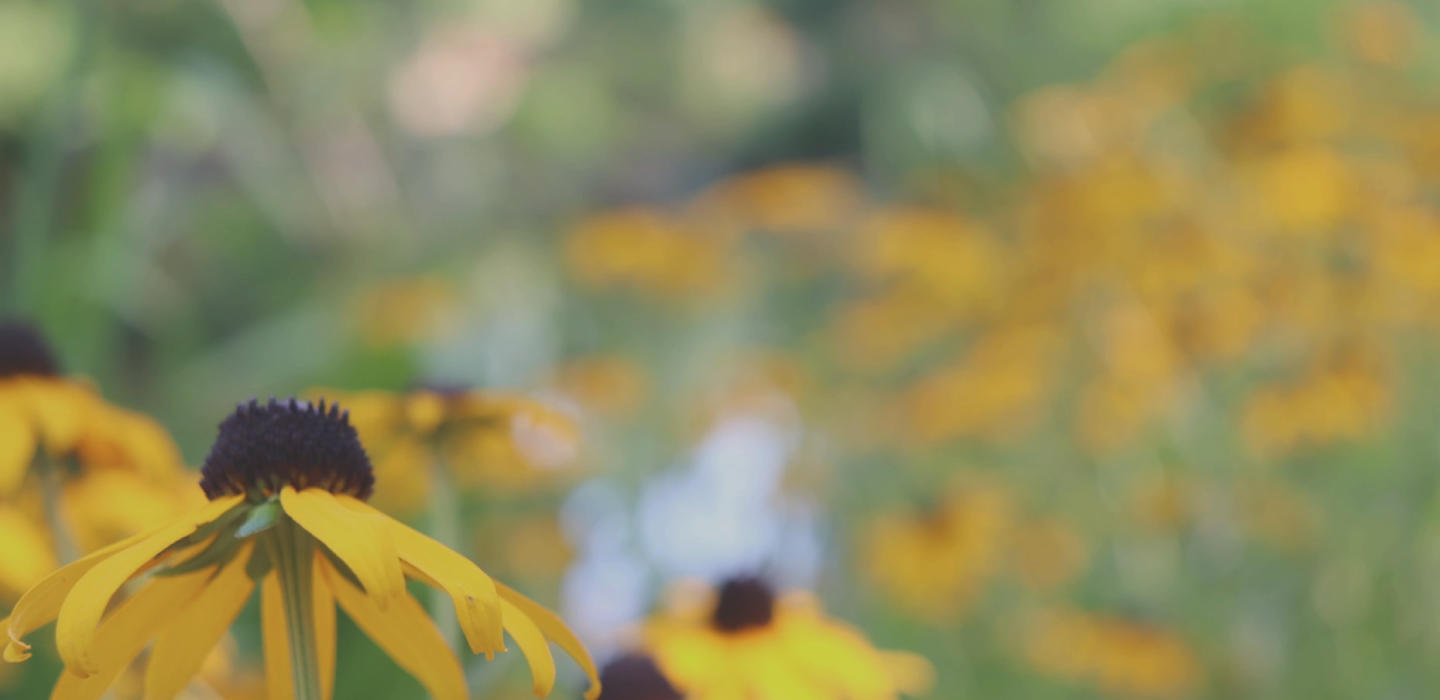Saving Our Savannas, an educational exhibit is designed to increase awareness of the cultural and ecological importance of longleaf pine savannas, especially in our own region of North Carolina, is on display at the Wyatt Visitor Pavilion of Cape Fear Botanical Garden from September 6-October 11, 2025.
You can also participate in Coordinating Events:
* Party of the Pines Art Night – October 4 (Click for details)
Saving Our Savannas: Stories of the Longleaf Pine explores the natural, cultural, and historical significance of longleaf pine ecosystems across the southeastern United States. The exhibit features five double-sided retractable banner panels that highlight topics such as:
- The ongoing importance of conservation and land stewardship
- The relationship between longleaf pines and fire
- Rare plants and animals found only in these ecosystems
- Indigenous connections to longleaf pine lands
- The African American legacy in the lumber and turpentine industries
Once covering over 90 million acres of the southeastern U.S., longleaf pine forests now occupy just a fraction of their original range. These ecosystems are not only rich in biodiversity but also incredibly resilient—able to withstand hurricanes, drought, pests, and even fire. They’re home to unique and endangered species like the red-cockaded woodpecker, gopher tortoise, Venus flytrap, and pitcher plants.
Longleaf pine forests are also important allies in climate resilience. They absorb large amounts of atmospheric carbon, making them a powerful tool for carbon sequestration and environmental restoration.



Thanks to generous support from the Youth Growth Stock Fund and the United Way of Cumberland County, the exhibit (on loan from North Carolina Botanical Garden) will be free to view in CFBG’s Entry Pavilion and will be supplemented with a range of hands-on materials and educational displays.
Visitors can explore a live longleaf pine sapling, handmade pine needle baskets, native carnivorous plants, turpentine tools, a fire ecology display, and more.
This exhibit supports the CFBG 2025–26 theme: Harmony in Nature. Rooted in the idea of the “web of life,” this theme celebrates the balance, interconnectedness, and interdependence that hold ecosystems together.
